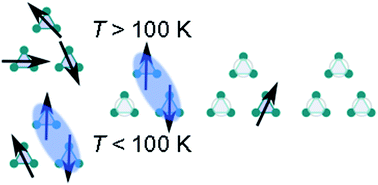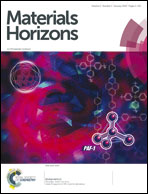Electronic tunability of the frustrated triangular-lattice cluster magnet LiZn2−xMo3O8†
Abstract
LiZn2Mo3O8 is an electrically insulating geometrically frustrated antiferromagnet in which inorganic Mo3O13 clusters each behaves as a single S = 1/2 unit, with the clusters arranged on a two-dimensional triangular lattice. Prior results have shown that LiZn2Mo3O8 does not exhibit static magnetic order down to at least T = 0.05 K, and instead possesses a valence bond ground state. Here, we show that LiZn2Mo3O8 can be hole doped by oxidation with I2 and subsequent removal of Zn2+ cations to access the entire range of electron count, from one to zero unpaired electrons per site on the triangular lattice. Contrary to expectations, no metallic state is induced; instead, the primary effect is to suppress the number of sites contributing to the condensed valence-bond state. Further, diffraction and pair-distribution function analysis show no evidence for local Jahn–Teller distortions or other deviations from the parent trigonal symmetry as a function of doping or temperature. Taken together, the data and density functional theory calculations indicate that removal of electrons from the magnetic layers favors Anderson localization of the resulting hole and an increase in the electrical band-gap over the formation of a metallic and superconducting state. These results put strong constraints on the chemical conditions necessary to realize metallic states from parent insulating geometrically frustrated antiferromagnets.


 Please wait while we load your content...
Please wait while we load your content...